This post may contain affiliate links. Please read our disclosure policy. As an Amazon Associate, I earn from qualifying purchases.
This einkorn sourdough bread is made with 100% all-purpose einkorn flour, which gives you a light-colored loaf with a soft, tender crumb and rich, buttery flavor. It’s naturally fermented for a mild tang and doesn’t require any kneading, just gentle folds and time to rest. No special flour blends, no extra steps. Just the simple beauty of einkorn at its best.
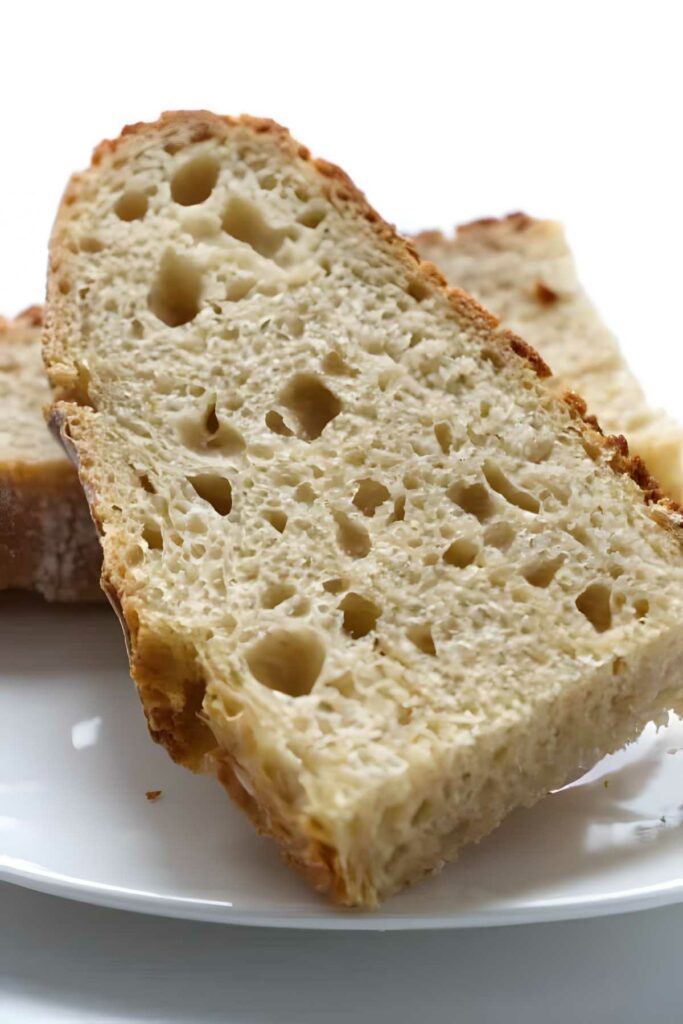
New to sourdough? You might want to start with my Dutch oven sourdough bread made with regular all-purpose flour.
Here’s Why This Einkorn Sourdough Bread Recipe Works
No kneading needed: Einkorn’s delicate gluten doesn’t strengthen with kneading, so a few folds and some rest time are all it takes.
Flexible timing: A long, slow ferment in the fridge gives you scheduling wiggle room and a deeper sourdough tang.
Straightforward ingredients: Just four basics; starter, water, all-purpose einkorn flour, and salt. No blends or fillers, so nothing masks einkorn’s naturally rich flavor.
Rich, complex flavor: Einkorn brings a naturally buttery, nutty taste that stands out in every slice.
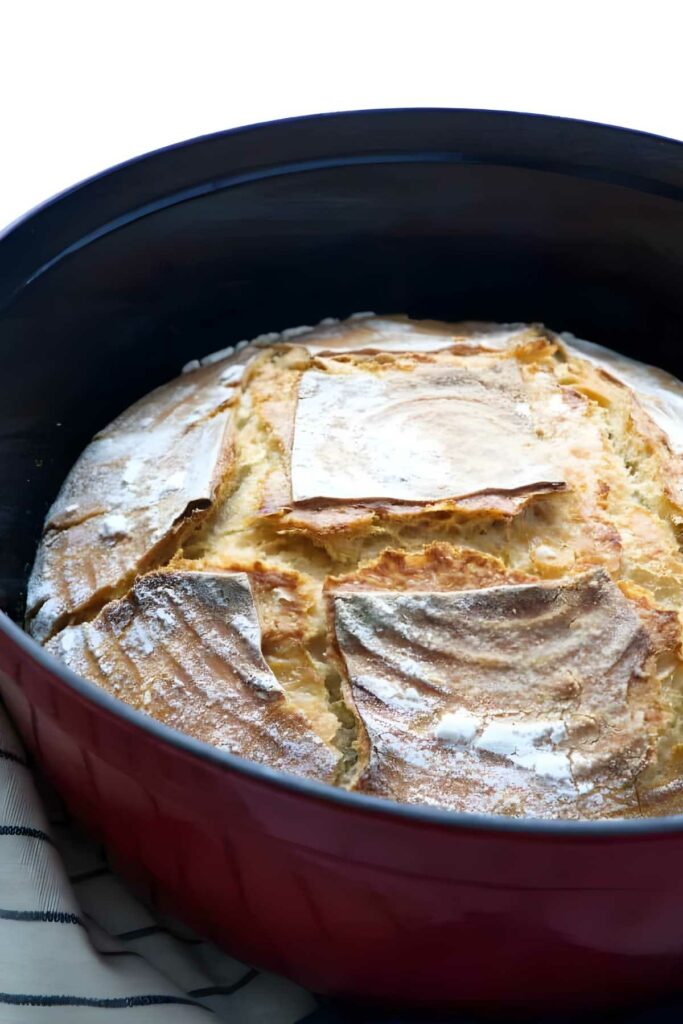
Recipe Tips
Use a mature starter: Your sourdough starter should be at its peak; bubbly, active, and recently fed, for the best rise and flavor.
Wet your hands: Einkorn dough is naturally sticky. A little water on your hands makes folding and shaping much easier.
Skip the countertop flour: Adding extra flour can weigh the dough down. Use wet hands and a damp surface instead to keep the texture light.
Proof by look, not the clock: Einkorn ferments faster than modern wheat. Watch for signs of rise instead of relying solely on time.
Flour your basket: A 50/50 blend of rice flour and einkorn flour helps prevent sticking. Rice flour doesn’t absorb as much moisture, so it creates a better barrier between the dough and the basket.
Choose your hydration level: This recipe gives you a range of water amounts so you can adjust based on your comfort with shaping sticky dough. Less water makes the dough easier to handle; more water gives you a softer, airier crumb. If you’re feeling confident, you can even add an extra tablespoon or two for an even lighter texture, just expect a looser dough that’s a bit more challenging to shape.
Storage: This bread keeps well at room temperature for 2 to 3 days. For longer storage, slice and freeze.
Einkorn Sourdough Questions, Answered
No problem. You can still make this bread even if your sourdough starter is made with regular flour. You have two options:
Option 1 (Quick and easy): Use your regular starter as-is. Feed it with your usual wheat flour, then use it in the recipe. Your loaf will be made with 100% einkorn flour except for the bit of wheat flour from the starter. It still works beautifully.
Option 2 (Gradual switch): Transition your sourdough starter to einkorn flour by feeding it several times with einkorn. Each feeding increases the percentage of einkorn in the starter:
1st feeding: 50% einkorn
2nd feeding: 75% einkorn
3rd feeding: 87.5% einkorn
4th feeding: 93.7% einkorn
5th feeding: 96.8% einkorn
This works because each feeding removes half the starter and replaces it with fresh einkorn flour and water. After four or five feedings, your starter is nearly all einkorn.
In the end, either method will give you a great loaf. It just depends on how “pure” you want your einkorn to be.
Yes! You can absolutely use a loaf pan if you’d prefer a more classic sandwich-style shape. In fact, using a pan makes the dough a bit easier to manage—especially since einkorn is naturally soft and sticky.
With a free-form or “hearth-style” loaf, the dough needs enough structure to hold its shape on its own. But in a pan, the sides offer support, so you don’t have to worry as much about the dough spreading out or flattening during the final proof or bake.
It’s a great option if you’re new to working with einkorn or just want a tidy loaf for slicing.
Want to try another ancient grain? Check out my spelt sourdough bread.
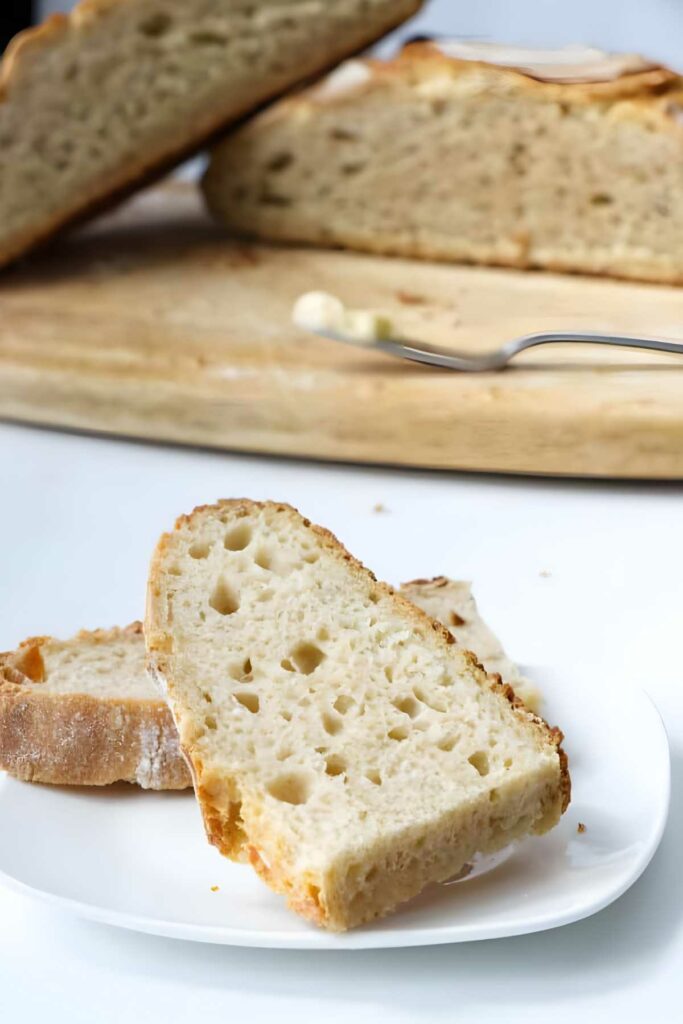
Sourdough Bread with Einkorn Flour
Einkorn sourdough dough can be a little tricky to handle. It is soft, sticky, and not always easy to shape. But the effort pays off. Using 100% all-purpose einkorn flour will give you a golden, crusty loaf with a tender crumb and deep, rich flavor.
Once you get the feel for it, this is the kind of bread that earns a regular spot in your baking routine.
Pin this now to find it later!
Pin It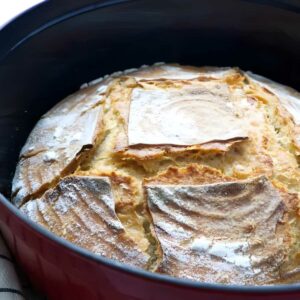
Sourdough Einkorn Bread
If you make this recipe, please leave a star rating and comment.
Ingredients
- ¾ cup active sourdough starter, 180 grams, see notes
- 1 ⅔ to 1 ¾ cups warm water, 392 to 413 grams
- 5 cups all-purpose einkorn flour, 600 grams
- 2 teaspoons salt, 12 grams
Instructions
- Mix the dough: In a large bowl, stir the starter into the warm water until fully dissolved. Add the flour and salt, and stir until it forms a rough, shaggy dough.
- Stretch and fold: After mixing, let the dough rest for 10 to 15 minutes. Then, with wet hands, grab one side of the dough, stretch it up, and fold it over to the opposite side. Rotate the bowl and repeat this motion 3 to 4 times, folding from a different side each time.Let the dough rest another 10 to 15 minutes, then repeat the stretch and fold process once more.
- Expect a sticky dough: The dough will be wet and sticky at this stage, that’s normal. Don’t add extra flour; it will make the bread dense. Wet your hands to keep the dough from sticking as you work with it.
- First rise (bulk fermentation): Let the dough rise at room temperature for 3 to 6 hours, until it increases by about 50% to 75%. This is your bulk fermentation stage.After the bulk rise, you’ll shape the dough and then do an optional cold proof (see below) to fit your schedule and boost flavor.
- Shape the dough: Turn the dough out onto a work surface and gently shape it into a round. If you're using a loaf pan, shape the dough into a log instead.
- Final proof: Place the shaped dough into a well-floured proofing basket or loaf pan. Cover and let it sit at room temperature for 1 to 2 hours to start the final proof, then transfer it to the fridge overnight or up to 15 hours.
- Einkorn sourdough should rise by about 50% to 75% before baking. Don’t let it double. If it hasn’t reached that after the cold proof, let it finish rising at room temperature. Keep an eye on it and move it to the oven once it hits that 50–75% mark to avoid over-proofing.
- Bake: Preheat your oven to 450°F. When it’s hot, gently tip the loaf into a Dutch oven or onto a baking sheet. Score the top with a sharp knife.If using a Dutch oven: cover for the first 30 minutes. Then remove the lid and bake for another 15–20 minutes, until the crust is golden and the loaf sounds hollow when tapped.
Notes
Nutrition
Nutrition information is automatically calculated, so should only be used as an approximation.
 Like this recipe? Rate & comment below!
Like this recipe? Rate & comment below!
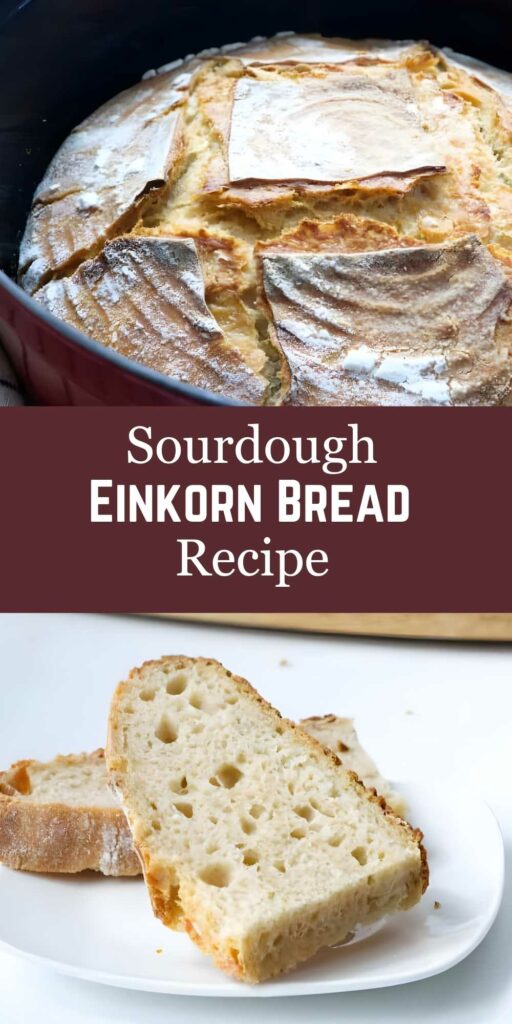
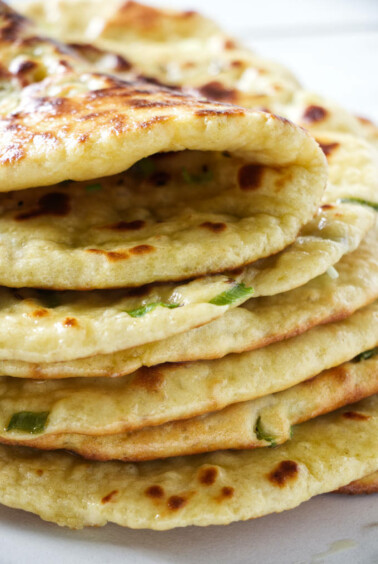
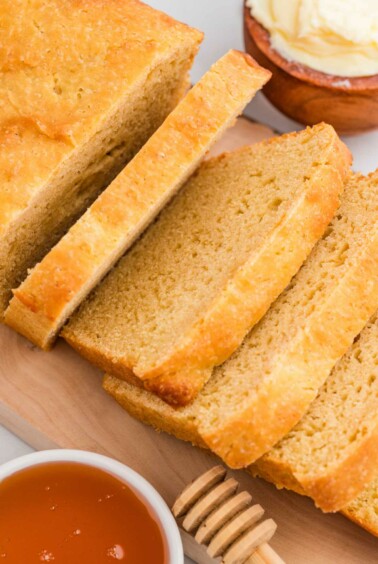
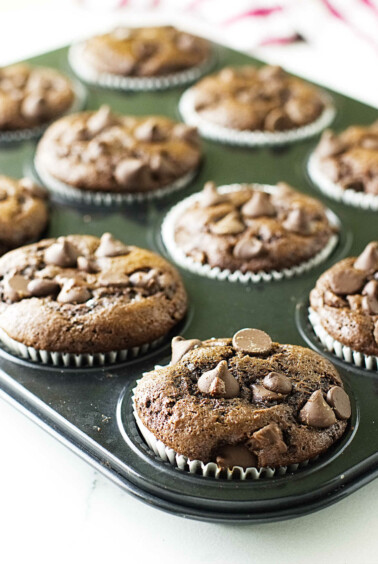
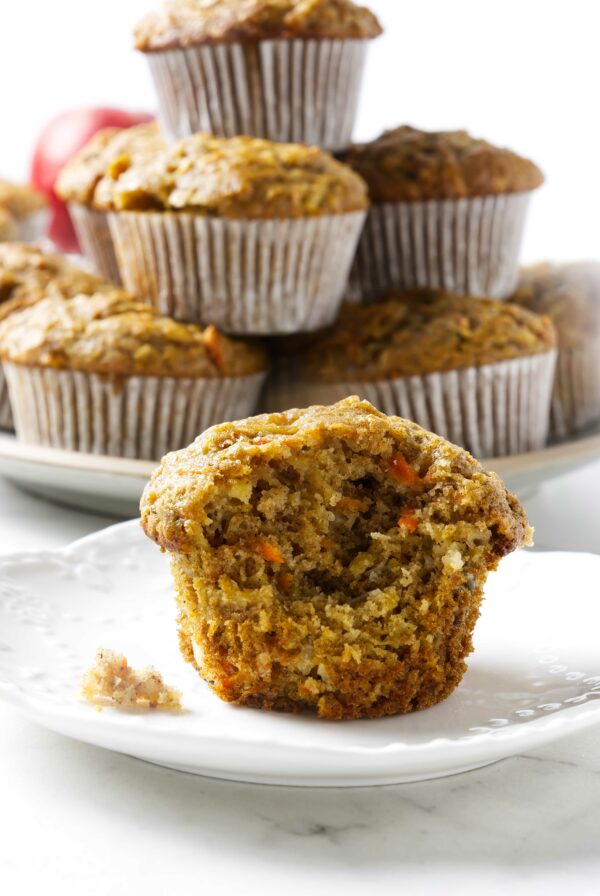
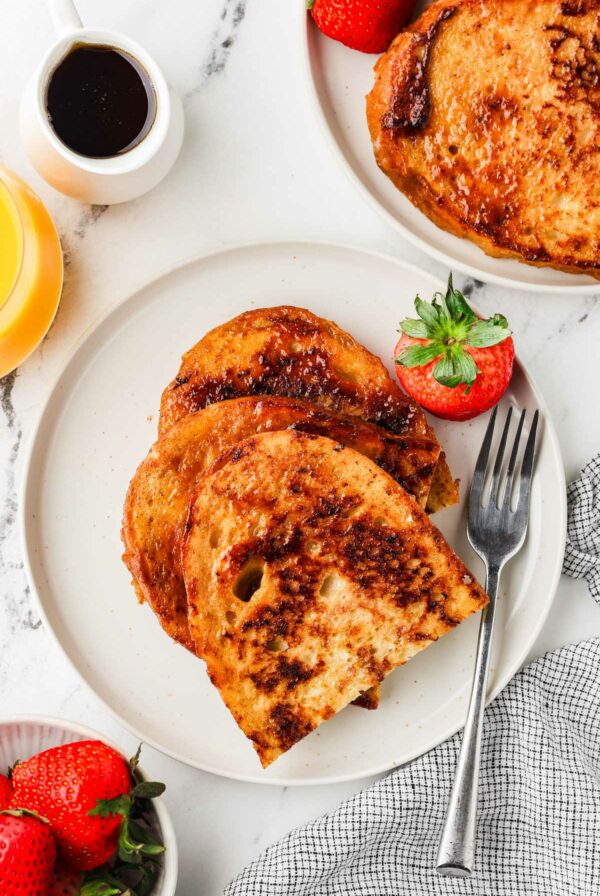
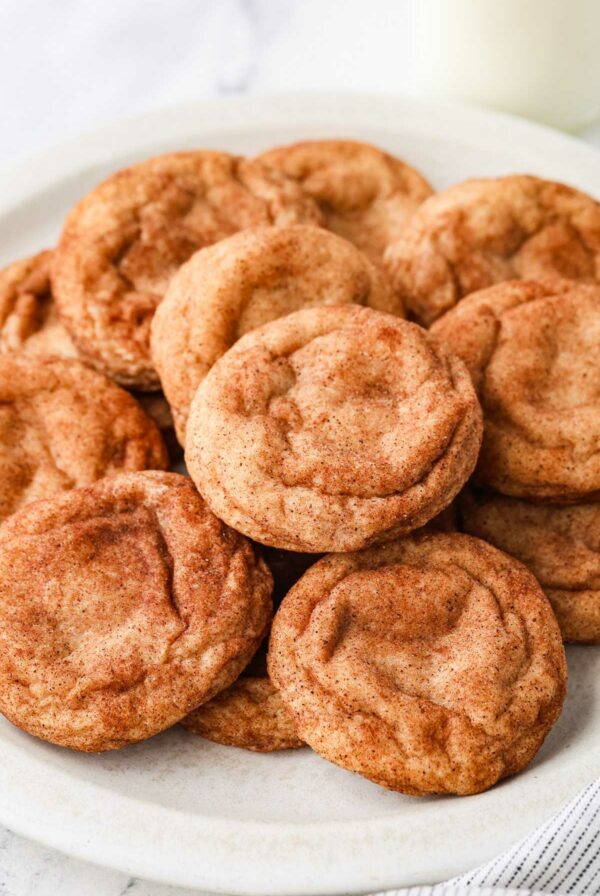
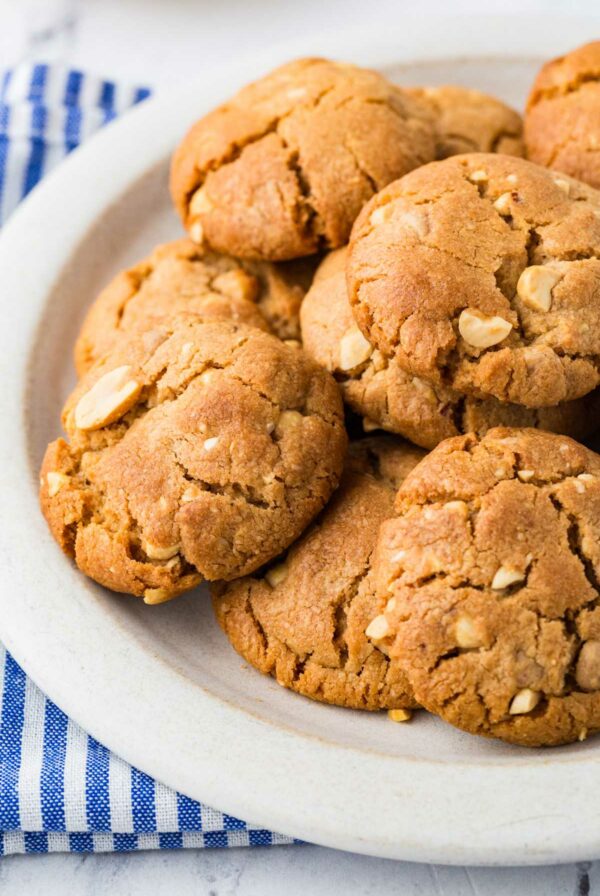










My starter is a potato based with no flour. Have you ever tried using this and adjusting the liquid? It is fed with potato flakes, sugar and water so it is a runny starter.
I haven’t tried working with a potato starter. I would recommend using it the same way as a flour based starter but adjusting the amount of flour or liquid you use in the recipes. If your starter is runny then it will affect the hydration in the dough. You may want to start by decreasing the amount of liquid in the recipe by just a tad, then once the dough is mixed, add additional flour if needed.
After the second proof do you put the cold dough right from the refrigerator into the oven? Don’t let it warm up first?
You can bake it immediately after you remove it from the fridge. However, sometimes the dough does not rise enough if the fridge is too cold. If that happens, let it sit at room temperature to warm up a bit. As it warms up, it will continue to rise. The trick is to make sure it does not rise too much or it will collapse.
Hi there! Thank you for the recipe as I am trying to use Einkorn from here on out verses the gluten free flour that we’ve been using.
If I have my own Einkorn starter instead of dehydrated , would I still use the same amount of starter , 3/4 cups?
Thank you again!
Yes, as long as you keep your starter fed at a 100% hydration. If you maintain a stiff starter with less hydration you can get away with less starter but you would want to adjust the water and flour in the recipe accordingly.
Attempting first loaf of sourdough bread after success with starter. 🙂 After the first proof at room temp, dough was very sticky (like working with marshmallow creme or salt water taffy) for step 5. I had to scrape it off the board and into the proofing bowl. Is this normal? Will it be this soft/sticky after the 2nd proofing in the fridge all night? Let me know and thank you!
It sounds like it is a little too soft and you may want to add a bit more flour.
“Sourdough starter” Is this an einkorn starter or can it be an I bleached AP flour starter?
You can use a starter made with all-purpose flour.
Can this be made with 100% whole grain einkorn flour?
Yes, whole grain will absorb more liquid so you may need to add a smidgen more water. The texture will be a bit courser with the whole grain bread and it will not rise as much but it still turns out quite tasty.
Good morning,
I made this over the weekend and I had one issue that I thought maybe you could help shed light on. The bread stuck to the dutch oven. A LOT!!! I couldn’t even chisel it out with a knife, lol. I had to rip the top part of the bread out and fill with water to get the bottom crust out. Any thoughts on why? The dough was VERY sloppy. I used to least amount of water recommended in the recipe and weighed the ingredients.The bread was delicious and the top crust was beautiful. I will try again and use parchment paper. Just curious as to why this may have happened.
Using parchment paper will prevent the bread from sticking to the pan. If you don’t use parchment then you need to make sure your pan is very well seasoned.
This is the most beautiful bread I have ever made!!
Really impressed! One overnight in the frige, oven spring a top crack are great too!
Thank you!!
Thanks for your comment, Pamela. I’m so glad it came out. Enjoy!
Did long fermentation. The bread looked a little flat the morning of baking. I was thinking I messed up! But turned out great, nice oven spring!
That’s great to hear, thanks for the comment. Glad you enjoyed it
I made this bread with whole wheat Einkorn flour…it tastes fine, but is quite dense. As I read through the the comments, I began to wonder if you are supposed to bake it in the Dutch oven with the lid on or without a lid. I did it without a lid. Please advise.
Yes, if you use a Dutch oven it is best to cook the bread with the lid on. Remove the lid after 30 minutes and continue baking without the lid until done.